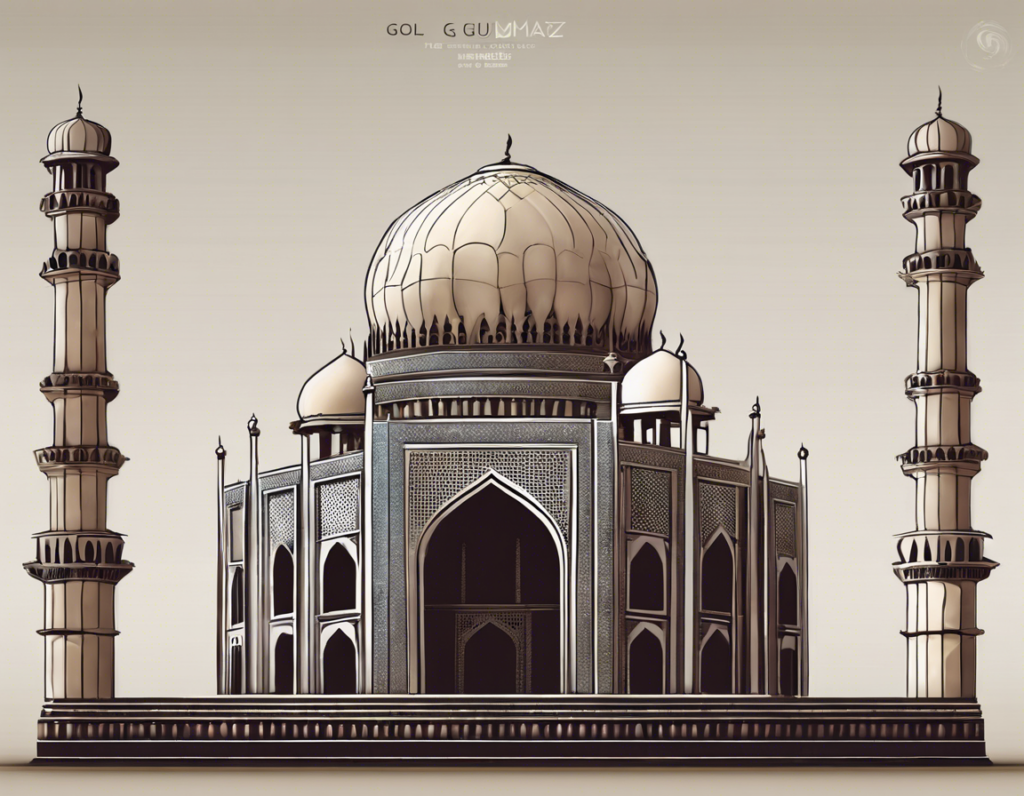Unveiling the Majestic Gol Gumbaz: A Spectacular Architectural Wonder
Nestled in the heart of Karnataka, India, the Gol Gumbaz stands as a testament to the grandeur and architectural prowess of the Deccan Sultanate. Built in the 17th century by the famed architect Yaqub Ali Khan, this magnificent mausoleum is an architectural marvel that continues to captivate visitors from around the world. In this blog post, we will delve into the history, design, significance, and unique features of the Gol Gumbaz, exploring why it is considered one of the most remarkable structures in India.
History of Gol Gumbaz
The Gol Gumbaz, meaning “circular dome”, was built by Sultan Mohammed Adil Shah, the seventh ruler of the Adil Shahi dynasty, in 1656. The mausoleum was intended to serve as the final resting place for the Sultan himself, as well as his wives, mistresses, and family members. The construction of the Gol Gumbaz took around 15 years to complete, showcasing intricate craftsmanship and architectural ingenuity.
Architectural Design
The most striking feature of the Gol Gumbaz is its massive dome, which spans an impressive 44 meters in diameter, making it one of the largest domes in the world. The dome is supported by eight intersecting arches, creating a mesmerizing whispering gallery inside. This architectural marvel allows even the faintest whisper at one end of the gallery to be heard clearly at the opposite end, a phenomenon that adds to the mystique of the Gol Gumbaz.
The exterior of the mausoleum is adorned with four towering minarets, each standing at 51 meters tall. These minarets not only enhance the grandeur of the structure but also serve as staircases leading to the top of the dome, offering panoramic views of the surrounding landscape.
Significance and Cultural Impact
The Gol Gumbaz holds immense cultural and historical significance in India, serving as a symbol of the rich architectural heritage of the Deccan Sultanate. The mausoleum is a popular pilgrimage site for history enthusiasts, art lovers, and architecture aficionados, drawing visitors who are in awe of its grandiose design and acoustic wonders.
Furthermore, the intricate carvings, geometric patterns, and calligraphic inscriptions adorning the walls of the Gol Gumbaz exemplify the artistic finesse of the artisans of that era, reflecting a blend of Persian, Turkish, and Indian architectural influences.
Unique Features of Gol Gumbaz
-
Whispering Gallery: The whispering gallery inside the dome is a unique acoustic marvel that amplifies even the softest sounds, creating an enchanting experience for visitors.
-
Central Chamber: The central chamber of the mausoleum houses the tombs of Sultan Mohammed Adil Shah, his family members, and courtiers, intricately decorated with inlaid ivory and precious stones.
-
Roof Access: Visitors can climb up the winding staircases of the minarets to reach the top of the dome, offering panoramic views of the picturesque landscape surrounding the Gol Gumbaz.
-
Astronomical Clock: The mausoleum is also home to a colossal mechanical clock, believed to be one of the earliest of its kind in the world, showcasing the technological advancements of that era.
FAQs (Frequently Asked Questions)
- Is photography allowed inside the Gol Gumbaz?
-
Photography is permitted inside the Gol Gumbaz; however, it is important to respect the cultural significance of the site and avoid using flash to preserve the delicate artwork and inscriptions.
-
Are there guided tours available at Gol Gumbaz?
-
Yes, guided tours are available at the Gol Gumbaz, providing visitors with in-depth insights into the history, architecture, and significance of this iconic monument.
-
What is the best time to visit Gol Gumbaz?
-
The best time to visit Gol Gumbaz is during the winter months from October to March, when the weather is pleasant and ideal for exploring the monument and its surroundings.
-
Are there any restrictions on entry to Gol Gumbaz?
-
Visitors are required to remove their shoes before entering the mausoleum and are advised to dress modestly out of respect for the cultural heritage of the site.
-
Can visitors access the top of the dome?
- Yes, visitors can climb the staircases in the minarets to reach the top of the dome, offering breathtaking views of the surrounding landscape and the town of Bijapur.
In conclusion, the Gol Gumbaz is a remarkable architectural gem that showcases the unparalleled craftsmanship and artistic vision of the Deccan Sultanate. Its grandeur, acoustic wonders, and historical significance make it a must-visit destination for anyone eager to delve into the rich heritage of India. A visit to the Gol Gumbaz is sure to leave a lasting impression, offering a glimpse into the opulent past of one of India’s most iconic structures.
